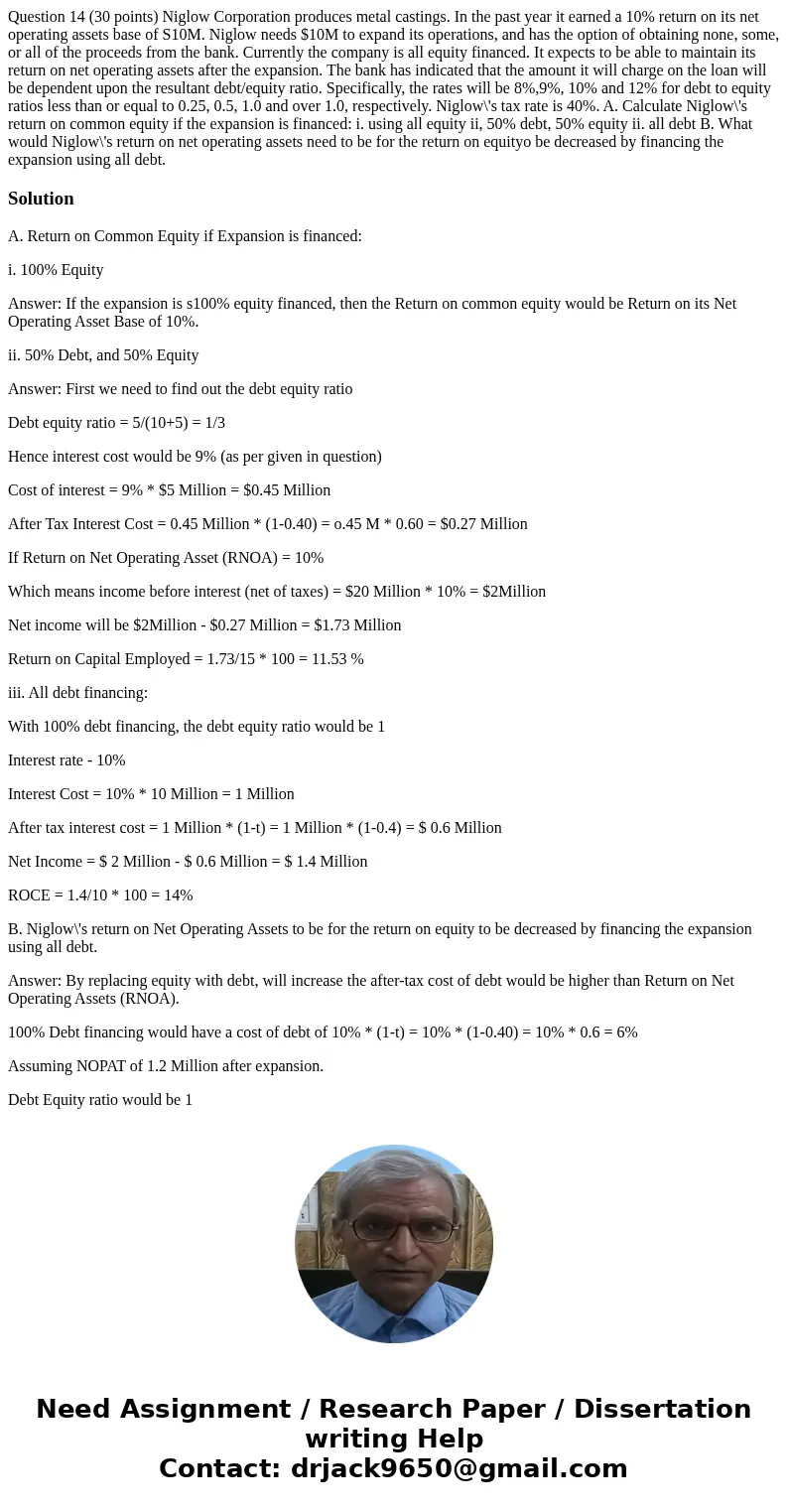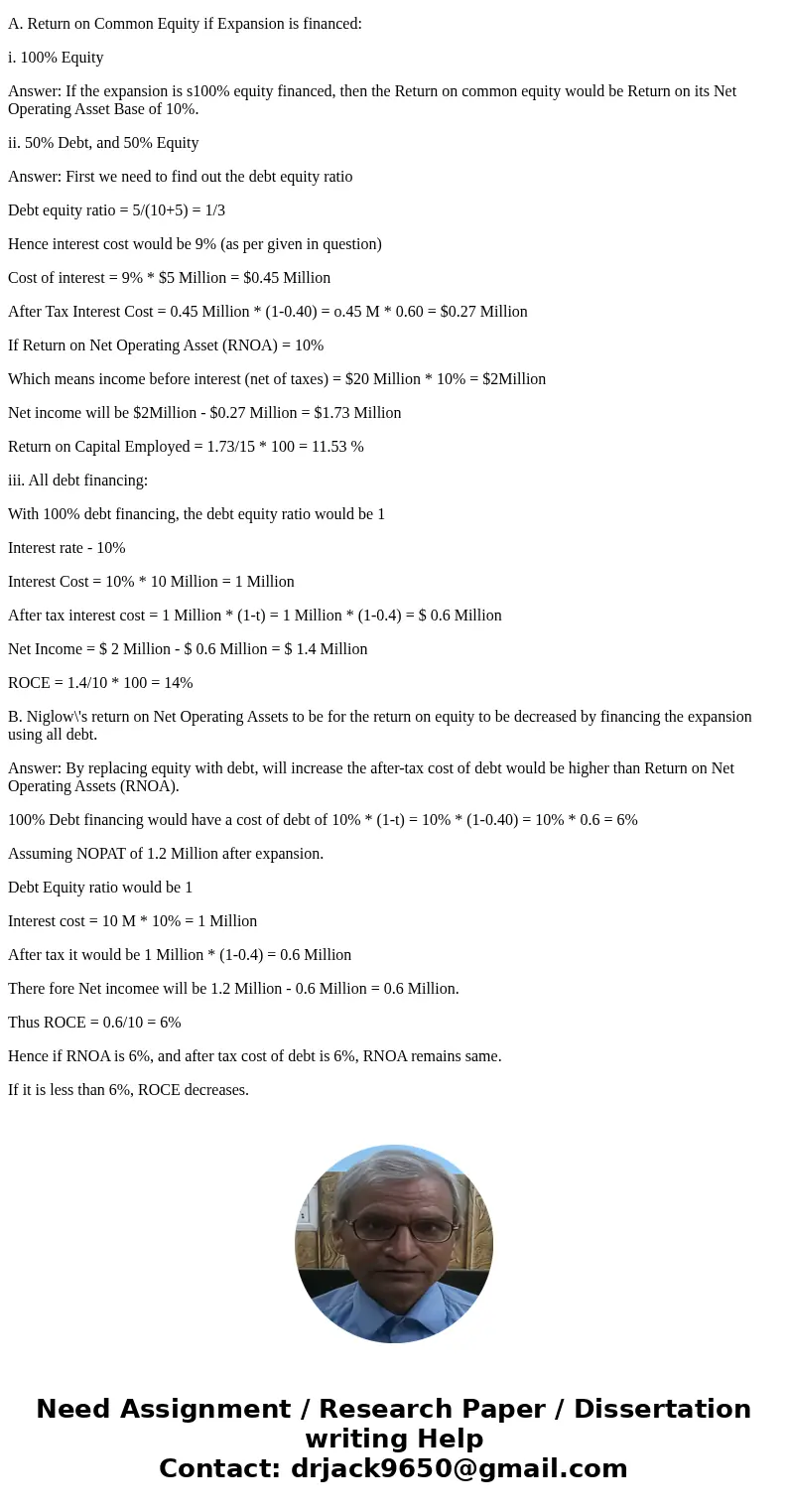Question 14 30 points Niglow Corporation produces metal cast
Solution
A. Return on Common Equity if Expansion is financed:
i. 100% Equity
Answer: If the expansion is s100% equity financed, then the Return on common equity would be Return on its Net Operating Asset Base of 10%.
ii. 50% Debt, and 50% Equity
Answer: First we need to find out the debt equity ratio
Debt equity ratio = 5/(10+5) = 1/3
Hence interest cost would be 9% (as per given in question)
Cost of interest = 9% * $5 Million = $0.45 Million
After Tax Interest Cost = 0.45 Million * (1-0.40) = o.45 M * 0.60 = $0.27 Million
If Return on Net Operating Asset (RNOA) = 10%
Which means income before interest (net of taxes) = $20 Million * 10% = $2Million
Net income will be $2Million - $0.27 Million = $1.73 Million
Return on Capital Employed = 1.73/15 * 100 = 11.53 %
iii. All debt financing:
With 100% debt financing, the debt equity ratio would be 1
Interest rate - 10%
Interest Cost = 10% * 10 Million = 1 Million
After tax interest cost = 1 Million * (1-t) = 1 Million * (1-0.4) = $ 0.6 Million
Net Income = $ 2 Million - $ 0.6 Million = $ 1.4 Million
ROCE = 1.4/10 * 100 = 14%
B. Niglow\'s return on Net Operating Assets to be for the return on equity to be decreased by financing the expansion using all debt.
Answer: By replacing equity with debt, will increase the after-tax cost of debt would be higher than Return on Net Operating Assets (RNOA).
100% Debt financing would have a cost of debt of 10% * (1-t) = 10% * (1-0.40) = 10% * 0.6 = 6%
Assuming NOPAT of 1.2 Million after expansion.
Debt Equity ratio would be 1
Interest cost = 10 M * 10% = 1 Million
After tax it would be 1 Million * (1-0.4) = 0.6 Million
There fore Net incomee will be 1.2 Million - 0.6 Million = 0.6 Million.
Thus ROCE = 0.6/10 = 6%
Hence if RNOA is 6%, and after tax cost of debt is 6%, RNOA remains same.
If it is less than 6%, ROCE decreases.


 Homework Sourse
Homework Sourse